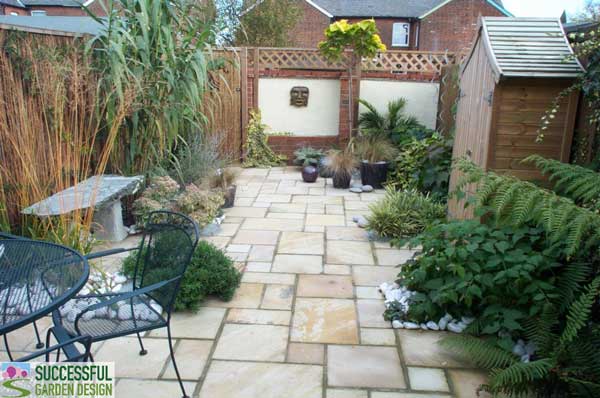Plants are the vital last piece in the landscape design process. But up until now I’ve avoided discussing how to use plants correctly in the garden and have focused heavily on design. The reason is because everyone thinks that it’s plants that make a great garden and therefore, plants get more than their fair share of airtime already.
However, now, as I’m in the middle of doing possibly the toughest planting scheme I hope I ever have to do, it seems a good time to bring plants to the forefront of our design discussions.
What’s So Tough About Doing a Planting Plan?
Normally, they are fairly straightforward. I consider the location and environmental aspects, what colour the clients like and the look they are going for be it traditional, exotic, contemporary or anything in between. But this time I’m faced with doing THE dreaded planting plan…
The one where I don’t have much control over what plants get used, the one that makes me pull hair out because the demands of the client are like nothing I’ve ever come across in my life before.
To read the backstory on this, read Plant Passion v Precision (Or When it All goes horribly wrong for a garden Designer!). OK, now you’re up to speed with situation and if you’ve seen the video tutorials you’ll know that the Spanish Courtyard Garden we featured is close to being finished with the paving and planting being done over Easter.
So it is from sunny Spain that I sit and write this. I’m typing away on the beach waiting for the bar to open so I can get internet access (yup, tough life).
Anyway back to this planting saga.
I look at a planting plan from a designer’s perspective – every plant must earn its place. If you think about it, plants usually spend most of year without flowers (in the UK anyway), so it’s important that the whole plant looks good, not just the flowers. Botanical curiosities that require a microscope to see their flowers don’t cut it. Having a beautiful flower that is gone in the blink of an eye to leave a fairly ugly plant behind, again, is of little use.
What Plants Should You Choose?
In any design, shape and form play a critical role. I mentally divide plants up into round, spiky, upright, arching, oval and flat. Unless you are planning a natural meadow, it’s a good idea to put different shaped plants next to one another, it gives clarity and definition to the scheme.
The Eternal Dinner Party
Think of doing a planting plan like planning an enormous, meal seating plan. It’s really vital you put the right people next to one another; putting two big sprawling loudmouths next to a very shy, timid person would be smothering for the quieter one. The same with your plants, you need to not only think about the shape, height, spread, flowering-time. You must consider how each plant looks and works with the plant next to it.
The Here and Now
With regards to the Spanish courtyard garden, I’m resigned to the fact I have very little control over what plants will go into it. BUT the one and only thing I can do is make sure that the oddest collection of plants a garden has ever seen are correctly positioned. I can make sure that the right shapes and colours end up next to each other. You’ll be pleased to know he’s gone off the idea of pansies with palm trees in the garden. The current favourite is daffodils… come back pansies, all is forgiven!
I’ll show you the end result in a week or two when it should be more or less finished (some plants we are struggling to get hold of).
Very Cunning Plant Tricks You Need to Know….
If you’d like to know some simple but cunning tips and tricks for choosing the right plants for your garden, then head on over to the 5 Minute Plant Expert.

5 replies to "Plants – How to Choose the Right Ones for Your Garden"
I think you make a good point about not focusing on the shape of the lawn area. I’m trying to take out more and more lawn, and I do fall prey to “whittling” out chunks to make room for plants that leave an oddly shaped area left over. But if you don’t see the lawn as an asset, is it any wonder it will get abused? Still, it’s a good thing to keep in mind as I’m whittling away at it—give the edges a thought.
Thanks Susan. I see so many gardens that have the lawn whittled down. Even if you are not that keen on the lawn, if you see it as an essential area of space that directly affects how you view your garden, it should make you whittle less!
I’ve written more about how important it is here: https://www.successfulgardendesign.com/the-key-to-a-great-garden-is/
[…] you are happy with the shape of the empty spaces, it is then time to add the planting and any features you wish to include in your […]
Certainly another consideration is microclimate. You may have both a planter with a south facing wall with full sun and a shaded area from either a tree or structure within a few feet of each other. I’ve found I can plant marginally cold hardy plants in those hotter areas and a different palate of plants in the shadier areas. Sometimes you can create the right microclimate for the plants you want.
I think it is so impotent post for every one.I am very happy to see your post and it is very help full post .I hope people read this and make use of your suggestions.
___________________________________________________________
https://www.thecheesyanimation.com/3D-Walkthrough.html